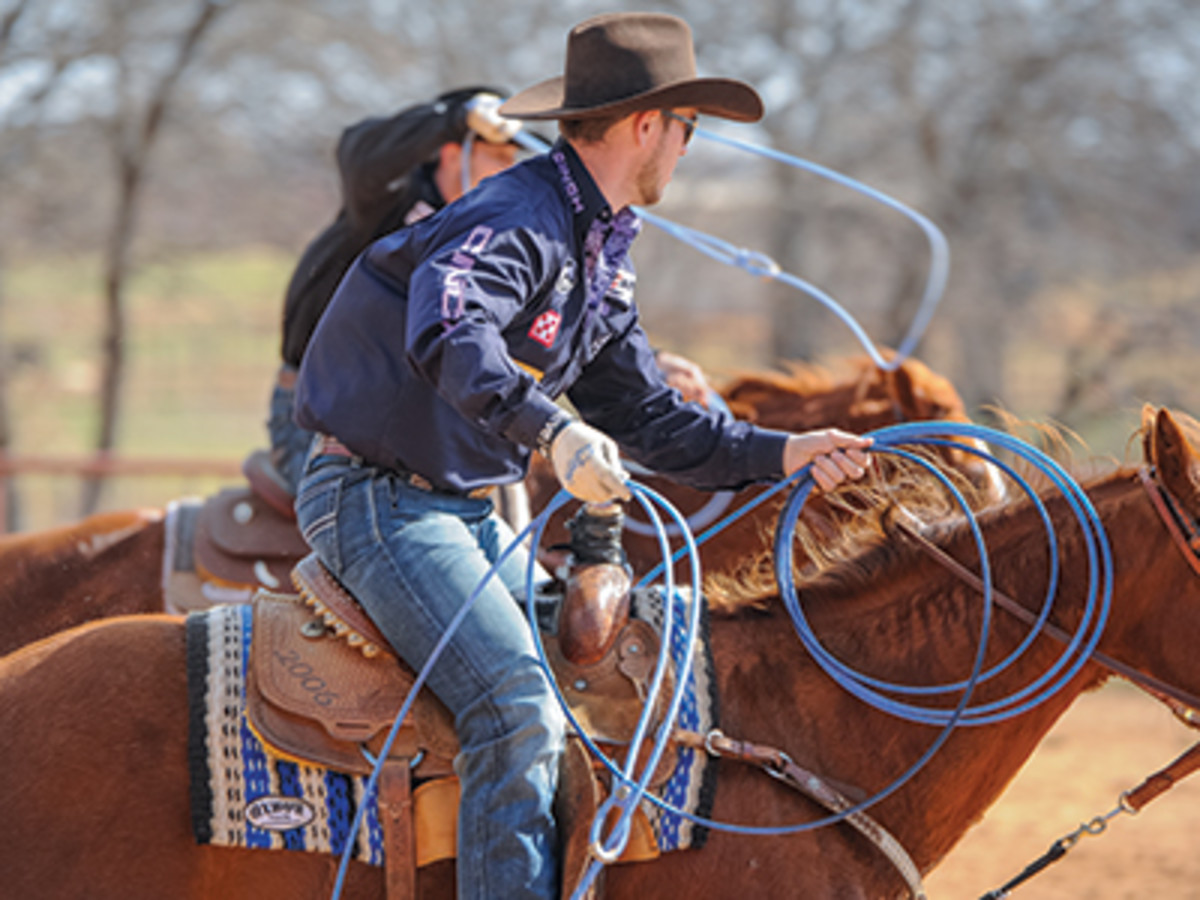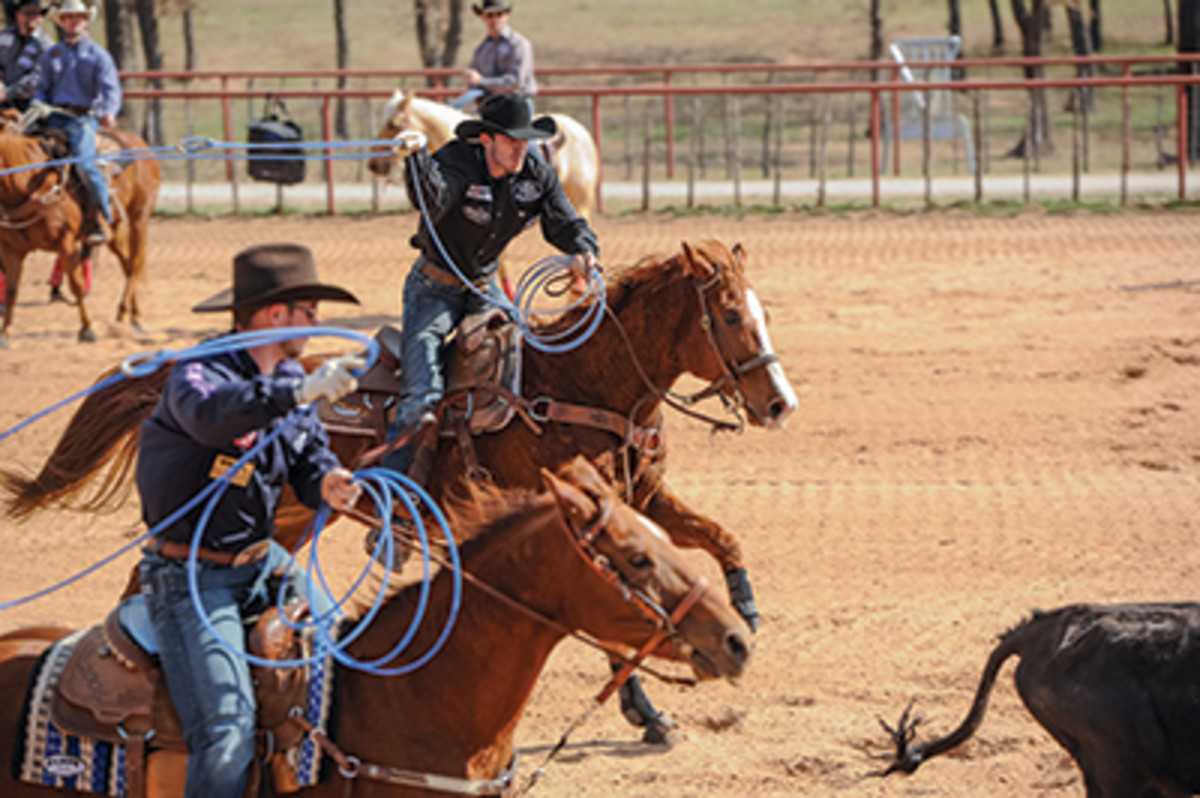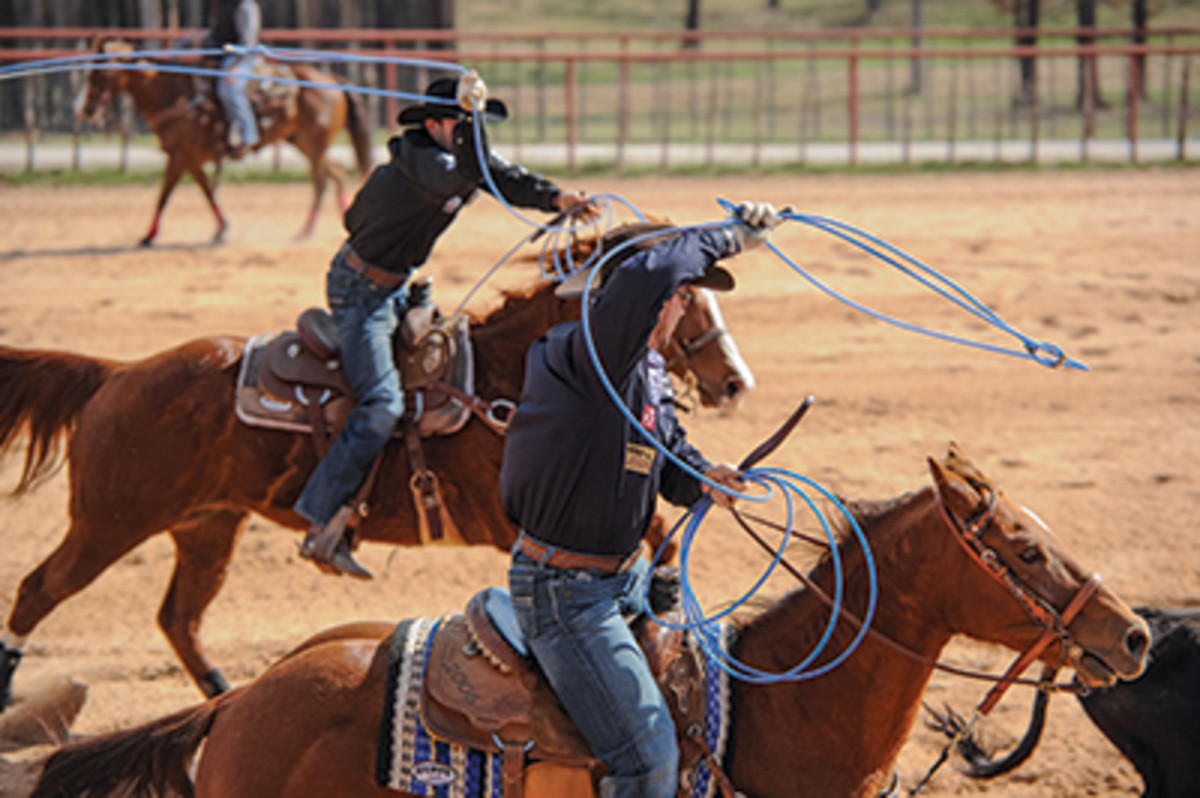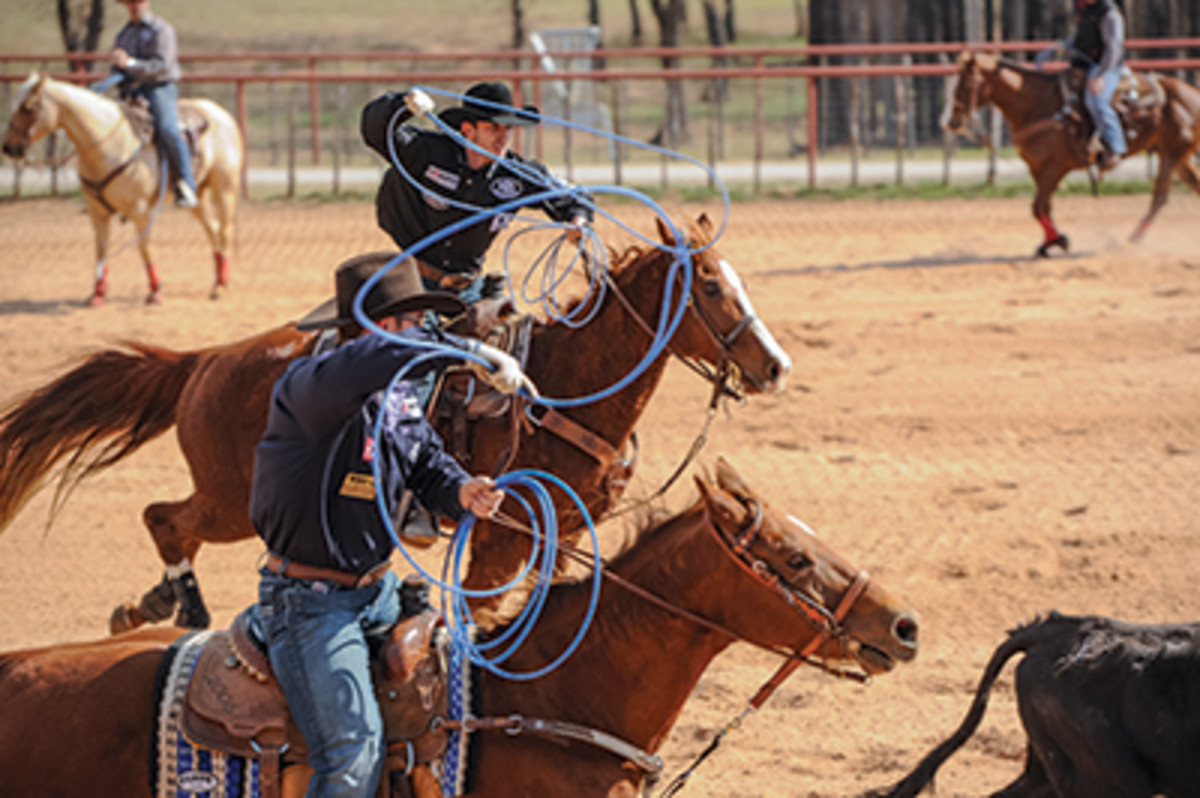Photos by Lone Wolf Photography
My general theory on team roping is the more basic we can keep it, the fewer changes we have to make. The fewer adjustments we have to make, the more consistent and faster we can be. In life, we’re consistent with simple things, like turning a light switch on and off. We’re less consistent with complicated things, like driving. Everybody can drive, but there are more failures because it is complicated.
On a gyroscope, when it’s spinning, the centrifugal force allows it to balance perfectly on a string or pinhead or whatever. My theory is once we start the centrifugal force of our swing, it’s difficult to change it. So if we start our swing in a way that we don’t have to change it, we can be more consistent and faster. If you draw a straight line from my hand to the hock, my swing should interrupt that line every time.
1. A heeler’s first swing starts the centrifugal force on the rope. Starting it correctly gives you a tremendous advantage. While your last swing is the most important, if you start your swing correctly, you will not have to change it during the course of the run.
Most heelers are comfortable holding their rope around waist level while riding. I think it improves your balance when your hand is at that level. You can move your hand up and down like a cat uses it’s tail.

One thing to notice is in all five images I am focused on the legs of the steer—particularly the hock.
2. Keeping your rope back also helps you start your first swing. Imagine a clock with your horse’s head as noon and his tail as six o’clock. From five o’clock to 11 o’clock is about what you’re trying to do. If I don’t have my rope pointed to the steer or my angle is not correct, it doesn’t mean I can’t catch the steer, it just means it will take me longer to get there. If you’re in time, but your rope is not in position, you can lose your timing getting your rope in position. Or, you end up whipping your rope into time, which closes your loop. But if your rope is at the right angle, it’s actually pulling the rope toward the legs. Starting correctly just makes it easier.

3. It’s important that when you bring your rope up, you stall at the top of your first swing. Stalling allows your rope to cam over and fall like a stalled airplane dives. Basically, if you are looking at your target, you can stall your hand (just outside your right temple) until your rope falls into your line of sight.
The purpose for the stall is if you come from low on the right to high on the left, and you never allow that rope to fall, the centrifugal force will pull your rope down on the right and up on the left, which is opposite of what you want since the steer is on the left side. Instead, you want the rope lower over your left shoulder, but particularly over the horse’s left ear—toward the steer.

4. My rope is falling out of the stall, and you’ll notice that I turn the top strand (controlled by my index finger) down, and the bottom strand (my little finger) up. Turning your rope over is a preference, not a must, for heelers. I think you have three goals for your swing.
First, keep the loop open. Roping is like running cattle through a gate: the more open it is, the better your chance of catching. Second, aim your centrifugal force so your rope is literally pulling toward the steer. Finally, timing with the steer’s legs—you can only catch a steer when his feet are off the ground.

5. When my rope interrupts my line of sight to the steer, I start putting power behind it again. It’s almost at the bottom where I’ll start applying power. It’s at this point that I begin to pick up the timing of the steer. The swing is completed then and all I have to do is go in a circle over my horse’s left ear until the steer is turned and legal. At this point, the only way you can tell this is my first swing is because I haven’t fed my rope.
I do the same things when I’m roping the sawhorse. I stand back and start perpendicular to the dummy and break my rope over my left side for my first swing, then proceed around an “imaginary” corner and rope the legs.











